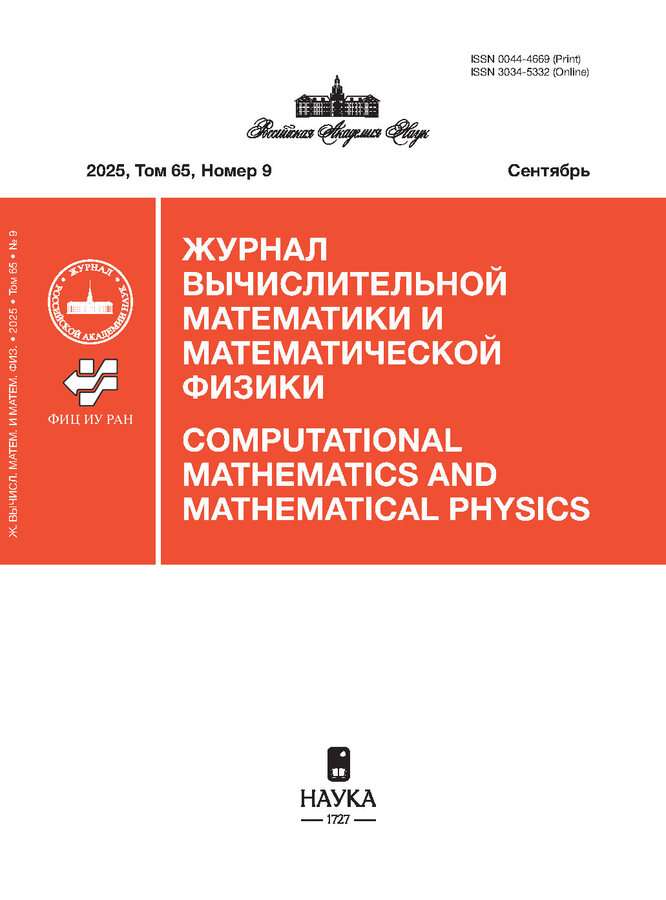SYNTHESIS OF A REGULATOR FOR A LINEAR-QUADRATIC OPTIMAL CONTROL PROBLEM
- Authors: Antipin A.S1, Khoroshilova E.V2
-
Affiliations:
- Dorodnitsyn Computing Center, Federal Research Center Computer Science and Соntrol, RAS
- Lomonosov Moscow State University
- Issue: Vol 64, No 9 (2024)
- Pages: 1618-1634
- Section: Optimal control
- URL: https://ruspoj.com/0044-4669/article/view/665189
- DOI: https://doi.org/10.31857/S0044466924090049
- EDN: https://elibrary.ru/WKZSWO
- ID: 665189
Cite item
Abstract
In Hilbert space, we consider a linear-quadratic optimal control problem with a fixed left end and a movable right end, for a fixed period of time. The target functional is the sum of the integral and terminal components of the quadratic form. Each of the components searches for its minimum on its permissible set independently of each other. At the right end of the time interval, we have a linear programming problem. The solution to this problem implicitly defines a terminal condition for controlled dynamics. A saddle approach is proposed to solve the problem, which boils down to calculating the saddle point of the Lagrange function. The approach is based on saddle inequalities in both groups of variables: direct and dual. These inequalities represent sufficient conditions for optimality. A method for calculating the saddle point of the Lagrange function is formulated. Convergence in direct and dual variables is proved, namely: weak convergence in controls, strong convergence in phase and conjugate trajectories, as well as in terminal variables of the boundary value problem. On the basis of the saddle approach, control synthesis is built, i.e. feedback in the presence of control constraints in the form of a convex closed set. This is a new result, since in the classical case, in the theory of a linear regulator, a similar statement is proved in the absence of control constraints, which makes it possible to use the Riccati matrix equation. If there are restrictions on management, these arguments no longer pass. Therefore, the basis of the obtained result is the concept of a reference plane to a set of controls.
About the authors
A. S Antipin
Dorodnitsyn Computing Center, Federal Research Center Computer Science and Соntrol, RAS
Email: asantip@yandex.ru
Moscow, Russia
E. V Khoroshilova
Lomonosov Moscow State University
Email: khorelena@gmail.com
Moscow, Russia
References
- Антипин А.С., Хорошилова Е.В. О синтезе обратной связи для задачи терминального управления // Ж. вычисл. матем. и матем. физ. 2018. Т. 58. № 12. С. 1973-1991.
- Антипин А.С. Терминальное управление краевыми моделями //Ж. вычисл. матем. и матем. физ. 2014. Т. 54. № 2. C. 257-285.
- Antipin Anatoly S, Khoroshilova Elena V. Linear Programming and Dynamics // Ural Mathematical Journal. 2015. V. 1.№ 1. P. 3-18.
- Antipin Anatoly, Khoroshilova Elena. Saddle point approach to solving problem of optimal control with fixed ends // J. of Global Optimization. 2016. P. 3-17.
- Antipin Anatoly, Khoroshilova Elena. On methods of terminal control with boundary-value problems: Lagrange approach. In book “Optimization and Application in Control and Data Science”. Series Title: Springer Optimization and Its Applications. 2016. P. 17-49.
- Antipin А. Sufficient condition and evidence-based solution // The Proc. of the conference “Constructive Nonsmooth Analysis and Related Topics” (dedicated to the memory of V.F. Demyanov) (CNSA), 2017. P. 1-3.
- Antipin A.S, Khoroshilova E.V. Lagrangian as a tool for solving linear optimal control problems with state constraints // Оптимальное управление и дифференциальные игры. Материалы Международной конференции, посвященной 110-летию со дня рождения Льва Семеновича Понтрягина. 2018. С. 23-26.
- Antipin A.S., Khoroshilova E.V. Controlled dynamic model with boundary-value problem of minimizing a sensitivity function//Optim. Lett. 2019. V 13. № 3. P 451-473.
- Антипин А.С, Хорошилова Е.В. Динамика, фазовые ограничения и линейное программирование // Ж. вычисл. матем. и матем. физ. 2020. Т. 60. № 2. С. 177-196.
- Antipin A.S., Khoroshilova E.V. Optimal Control of Two Linear Programming Problems // XII International Conference Optimization and Applications (XII OPTIMA-2021). In: Olenev N.N., Evtushenko Y.G., Jacimovic M., Khachay M., Malkova V. (eds) Optimization and Applications. LNCS, 2021. Springer, V. 1378. P. 151-164.
- Antipin A.S., Khoroshilova E.V. A proven method for optimal control problems with linear dynamics and phase constraints // In: Dynamical systems: stability, control, optimization: Proc. of the International scientific conference in memory of Professor R.F. Gabasov, Minsk, October 5—10. 2021. P. 56-58.
- Antipin A.S., Khoroshilova E.V. Terminal Control of Multi-Agent System // Lecture Notes in Computer Science, 2022. V. 1378. P. 5-16.
- Васильев Ф.П. Методы оптимизации: Кн. 1, 2. М.: МЦНМО, 2011.
- Кротов В.Ф., Гурман В.И. Методы и задачи оптимального управления. М: Наука. Гл. ред. физ.-мат. лит-ры, 1973.
- Ащепков Л.Т., Величенко В.В. Оптимальное управление. Курс лекций. Владивосток: Изд-во Дальневосточного университета, 1989.
- Евтушенко Ю.Г., Третьяков А.А. Новое доказательство теорем Куна-Таккера и Фаркаша // Ж. вычисл. матем. и матем. физ. Т. 58. № 7 (2018). С. 1084—1088.
- Antipin A.S., Jacimovic M. and Mijajlovic N. Extragradient method for solving quasivariational inequalities // Optimization. 2017.
- Антипин А.С., Ячимович В., Ячимович М. Динамика и вариационные неравенства // Ж. вычисл. матем. и матем. физ. 2017. Т. 57. № 5. С. 783-800.
- Сейдж Э.П., Уайт Ч.С. Оптимальное управление системами. Пер. с англ. М: Радио и связь, 1982. 392 с.
- Калман Р., Фалб П., Арбиб М. Очерки по математической теории систем. М.: URSS, 2004.
Supplementary files











